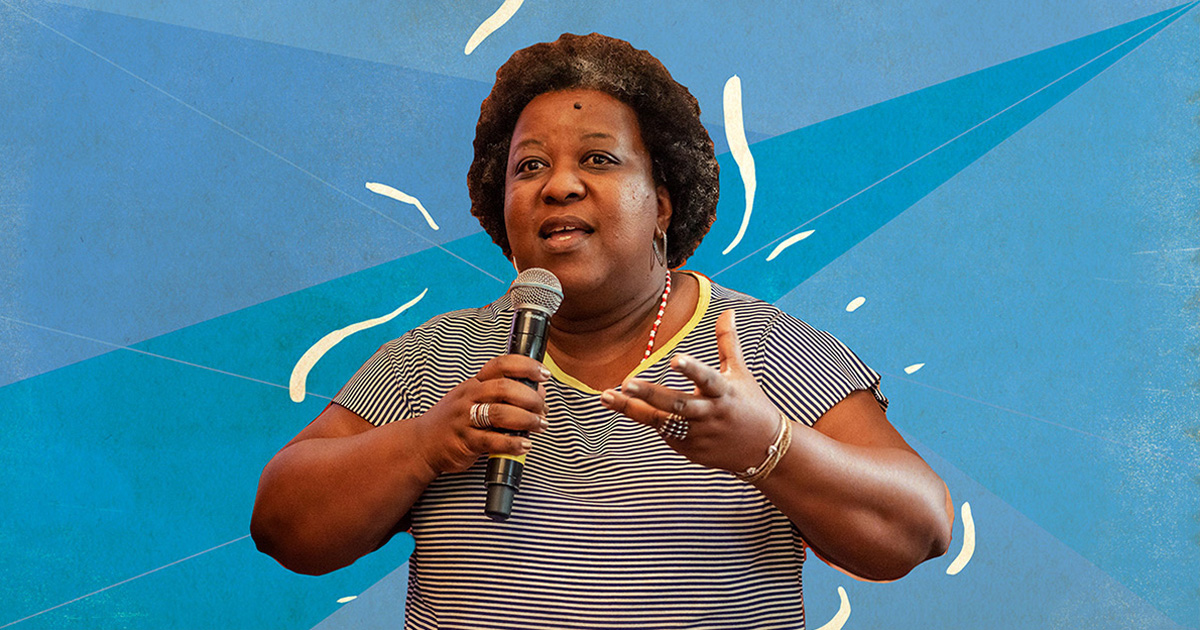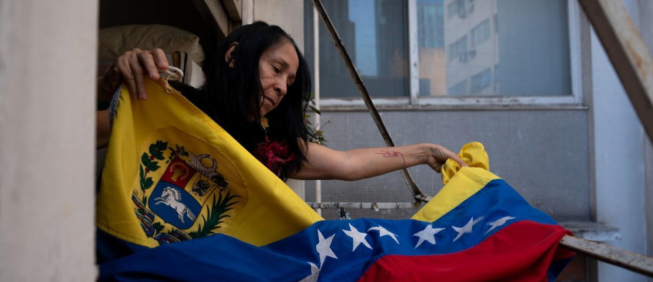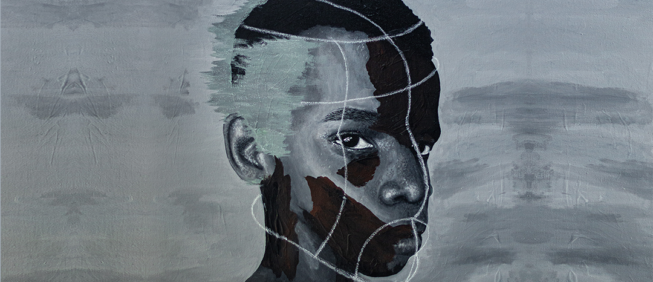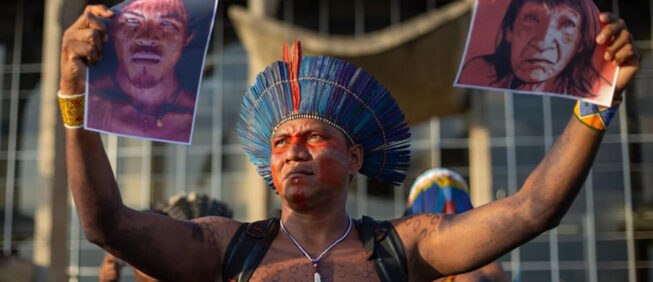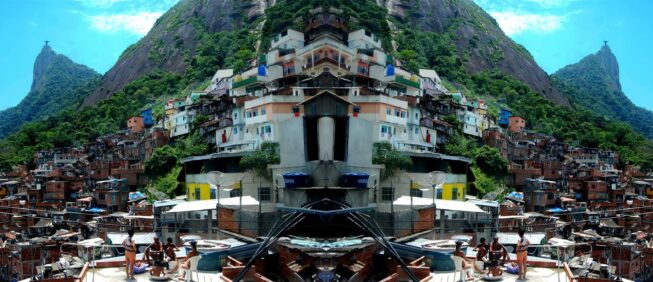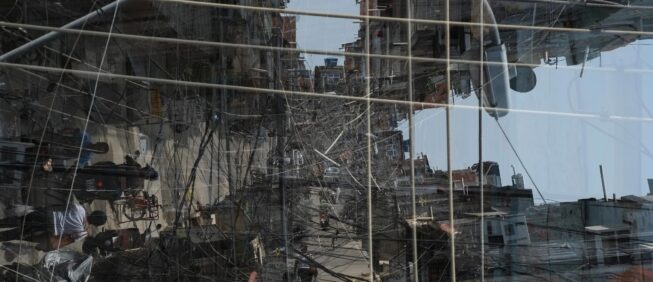Macaé Evaristo
"The Legitimacy of Difference in Public Schools: Towards a Project of (Re)Existence and Plural Trajectories"
Patrícia Santos
| Brazil |
20 de December de 2019
translated by Edmund Ruge
Patrícia Santos: We’re aware of your trajectory as an educator, Secretary of Education for the Municipality of Belo Horizonte in the state of Minas Gerais, in the Secadi — the Secretariat of Continued Education, Literacy, Diversity, and Inclusion — and also in the Ministry of Education at the Federal level. You also taught at the Intercultural Indigenous Teachers Course, having coordinated the Program of Implantation of Indigenous Schools in the state of Minas. Drawing parallels from your experience, what can you highlight that might allow us to discuss the potency of public schools in Brazil?
Macaé Evaristo: The theme of this edition of Peripheries, “Potencies and challenges for public schools,” is very important to me, given that I have dedicated my life to education. In speaking of education, I always have to talk about my mother, who raised four children and was widowed when I was ten years old. She had a plan for our family, in a city in the interior of Minas Gerais where blacks are a minority of the population. In such circumstances, a project for a black family, all women, would likely turn into one of submission and subservience. But that wasn’t her plan.
Rather, she sought to transform our situation through education. She always held high expectations of us and dedicated herself to the school trajectory of her four daughters, to the extent that we have all passed through higher education, with some completing master’s degrees and others on the path to concluding master’s degrees. My entrance into the job world was through teaching. I worked in schools in the periphery of Belo Horizonte as a way to get to college. I took a civil service exam and, by age 19, I had already become a teacher in the Belo Horizonte public school system.
And what do I think about public schools? I think that the structural racism present in Brazilian society deprived the majority of its population of access to education throughout the 20th century. We really only managed to provide universal education for the population between 6 and 14 years old at the end of the 1980s and beginning of the 1990s. And, with this democratization, with the arrival of public schools for blacks, for the impoverished population, came a disparaging discourse around public schools.
We always see people referring to public schools of long ago as good, as if today’s schools had lost their quality. They seek to devalue, in truth, the subjects that have made it to public schools. And that’s us — blacks, women, the populations of the periphery and the countryside, quilombo and indigenous communities. It is a strategy, and a sophisticated one, for a new attempt at enslavement and subjugation of the black and impoverished population that has come to attend public schools.
On the other hand, we must recognize that public schools save lives. There are many experiences in which public schools allow us to have a better comprehension of the place that we inhabit in this society. I always defend the educational project of democratic schools, as Paulo Freire himself said, “a reading of the world precedes a reading of the word.” I defend schools that can re-situate me in this world so that I can speak of myself, of my memory, of ancestrality, and of all the potential that we have.
The periphery is not a place of absence, of lacking. That is how they want to paint us: those without families, without memories, without histories. This is the narrative of the dominator, recalling Freire again, of those that seek to oppress us. We cannot give in to this narrative.
Considering your history and these moments that you spent in the municipal and state secretariats, or even at the Ministry of Education, given that you are a strong, black, woman, and that you bring with you this demand for a feminine universe and for recognizing the value of public schools, how was it dealing with this whole context? I imagine that there were some controversies.
It’s good to remember that we face racism at all moments. Being a principal, or a secretary of education, or a teacher does not eliminate us from the universe of structural racism, of structural misogyny. I was the first black Secretary of Education in Belo Horizonte, in the state of Minas, and even at the Ministry of Education. I was the first, but I don’t want to be the last. We speak of structural racism, but we should understand, also, that the positions of power, for us black people, are often solitary. We are held in check, daily, on questions that non-black people and men simply don’t have to deal with.
For being in these spaces, I hold myself to a high standard. The Brazilian State is patrimonialist and has always worked for certain groups. Building any sort of policy that breaks with social groups that were always given priority is a constant battle. Even in the simple act of constructing a policy creating a kit on Afro-brazilian literature: I was accused, as secretary, by sectors of the Belo Horizonte City Council, of having sought to commit religious proselytization. We were sketching a policy of acquiring literature produced by black female authors, of African and Afro-brazilian literature. Today, this stand-off is even stronger, because we have segments inside the legislative branch that truly are intolerant of Afro-descendent religions.
We must remember that education is a responsibility of the State. Even private education depends on State authorization in order to function. I also train professors from private schools. I know how the data is camouflaged, denied. Many educators that teach at private schools have spoken about the difficulties of dealing with childhoods and youths that are fragmented. They deal with a situation of auto-extermination, students that engage in self-mutilation. This is often silenced inside the institutions, or the student is expelled. Fighting for democratic schools means fighting for schools for all, and this isn’t limited to public schools; it includes private schools too. Our responsibility is with the full education of children and youth, and this stands for any and every school. It is an illusion to enter into this dichotomy or treat teachers from public and private schools as rivals. We are all part of this. Private schools, often, opt for a model of segregation, and create youth that barely know how to circulate through their own cities, be it in Rio de Janeiro or Belo Horizonte. They have no idea what real life is; they have no idea how to build empathy, or how to dialogue with that which is different. The idea of the school as a place of democratic coexistence is at risk. Is this the ideal, this civilizing project? The ideal of education? The destruction of public schools, let’s be clear, who does that interest?
What is it like to think on cultural plurality in the public school space, considering the experience of indigenous schools in Minas Gerais and the social movements, including high school student movements?
First of all, whether it be for the indigenous or quilombo population, one does not impose policies. I think that the maxim “nothing about us without us” is true. The Brazilian State needs to create spaces for political participation. We always have had, in Belo Horizonte, through the municipal education council, and with popular participation in the Secretariat of Education, constant dialogue with social movements and with black movements, which are all diverse. In indigenous school education, we had a participatory council made up of leaders from throughout the different communities. The whole program was established with the communities participating in the process. The program belongs to the communities, and not to the government, given that the program for implantation of indigenous schools is an arrangement between the state secretary of education, the Federal University of Minas Gerais, the National Institute of Forestry, and Funai (Brazil’s National Indian Foundation), with the participation of communities in participation.
We had, twenty years ago, villages without a single literate adult. The training course for indigenous teachers was the first action, and passed through a process of teacher selection with each of the communities of the different villages. The Xakriabá people had, back then, 7,000 inhabitants in the city of São João das Missões, in more than 30 villages. I participated in the meeting process, village by village, in order to choose who would be enrolled in the teacher training course program. I experienced impressive things. In this concept of democracy that we know, in which we vote and the majority wins, everything seems to be taken for granted. I learned differently with the Xakriabá. Assemblies lasted for the entire day, not in a simple voting process in which one side wins, the other loses, and everyone accepts it, but with the idea of doing more justice. Conducting a teacher training course in indigenous communities means creating jobs and income, which then need to be distributed. It would not make sense to have more than one teacher per family. The school is also thought of as a mechanism that mustn’t invade the community and create economic inequality.
Today, we offer high school in the Xakriabá village, and we also have people doing ontology, medicine, and there’s a mayor from there. What a change in 20 years, where before no one was even literate. This is expressive. For me, this is the meaning of learning to dialogue. The program of implementation of indigenous schools is a wonderful exercise in getting to know our own country. The Xakriabás are one people and the Patoxós are another, completely different people. But when we speak of indigenous populations, we treat them as if they were all the same. It is a constant learning process. They are different people, different cosmologies, with different relations to the world and ways of relating with children, with food. One example I think is wonderful, for the Maxakari people, it is impossible for one person to eat and another not. Food is distributed and is a collective good. For a population that lives in extreme poverty, when the food arrives, imagine if the kids eat and the adults don’t? They do not treat food as something separate from distribution.
This made me think about other contexts, even rethinking the homogeneous view of favelas and peripheries, as if they were monolithic. We must understand that the populations in our peripheries have matrixes, memories, histories, trajectories from many communities hailing from the countryside. There are experiences that do not cease to exist just because we are in an urban area. I worked in Cafezal, a favela in Belo Horizonte, for many years as a teacher. I remember the first time that we had pears as school snack. The kids asked us the cut the fruit, and when we asked why, they said that they wanted to give part of it to their brother, or to their mother — because if it’s something that I don’t have at home, am I going to eat it alone? No! My mother has to participate in this experience, and so does my brother. The favelas have an experience of solidarity and reciprocity. It’s what keeps us alive.
Over the last decades, we’ve seen the following myth come about in Brazil, which certainly extends to other realities, above all in Latin America, that “public schools are unable to teach and their students are unable to learn.” Private schools, then — where the upper and middle classes have moved their kids — have come to be considered, in general, expressions of quality and superiority, in particular because of results achieved on college entrance exams. What elements would you highlight in the construction of this myth of public school failure and the total superiority of private schools?
The initial point of disqualification stands in regard to the people that are in public schools. Since we are not seen as subjects worthy of rights, nothing we do in our communities holds any quality. They disparage our childhood, youth, public schools, and our professionals. And this is always as a reiteration of the project of the Brazilian slaveholding elite. Owing to the absence of public policies for schools, basic health units, cultural centers, cultural realization, this whole discourse of disqualification comes about. And this conservative discourse works as an alibi, masking the expropriation of public funding from the population that most needs it. This is because the elites think that State funds must be increasingly directed toward their own enrichment. Those that speak of low-quality education are the same ones that say that teachers are paid too much. They froze the education budget for the next 20 years. They removed the salary-floor for teachers. They think that schools only need to teach Math and Portuguese.
Another structural issue in the logic of this action and policy, and one that carries an even greater perversity, is that we have segments that ponder the extermination of the black population. We are fighting against groups that are not unlike the eugenicists of the 20th century. These are groups that think it is normal to machine-gun the favelas and peripheries, that it’s normal to kill children… just as they think it is normal to place 45 to 50 kids in a classroom and consider that perfectly appropriate for quality public education. They want to remove any and all possibilities for dignity from the people in these spaces.
Our struggle today is between groups. There are paradigms in dispute for democratic coexistence. Who fits into this group of “all” in democracy? Are we allowed to exist in this “all”? Some groups think we don’t fit — that women don’t fit.
I also must say that, despite my pessimistic analysis in this area, I am also very happy. This joy is our resistance. We have survived 500 years of massacres and exploitation, often in situations that were much more adverse than what we are living through today. Today, we connect with people from all around Brazil. We are ready to face this. In Minas Gerais, we are building a movement based in a phrase by Conceição Evaristo: “They plotted to kill us, but we didn’t plot to die.” This plotting has been around for a long time, and yet, we are here, strong and vigorous, and we are going to defend each life.
Speaking of this fight, we have to understand that we are not alone. This is not about individuals. One does not arrive to these spaces alone. It’s collective. It is the same way, for example, that we enact educational policies for indigenous schools in order to create the first indigenous schools in Minas Gerais, train the first indigenous teachers, we confronted disputes with municipalities, which are often dealing with the interests of landowners. These are economic interests that stand in opposition to ideas of indigenous schools and quilombo schools. The Ministry of Education, for example, asked to hold an audience, so that we wouldn’t create a single additional quilombo school in a certain state because, when a school is established as a quilombo school, the school recognizes itself as such and declares its status on the school census. And that makes it much more difficult for certain sectors to engage in the exploitation of these communities. We cannot deny that there is resistance there, history, collectiveness, recognition of identity, that has fought against a patrimonialist political culture.
The construction of identity politics does not run contrary to democracy. Rather, it is structural to the exercise of democracy. In education, this is fundamental, given that we have been silenced for so long. If we stop and recognize that, over the last 30 years, more than 30,000 rural schools have been closed, we see that it’s threatening to undertake a policy of support for rural schools, or to push for a policy, for example, that supports family agriculture, so that school meals contain 30% of their contents drawn from family agriculture. We deal with interests from the food industry and international interests when we talk about what we’re offering as food. Engaging in politics means facing this constantly. In Belo Horizonte, for example, when we look to build daycare centers in specific neighborhoods, rather than the executive deciding where to build, this choice should come from a participatory budgeting process in which local communities decide which areas deserve priority. In Belo Horizonte, the movement is completely different. The first school groups were built with a logic starting from the center out to the periphery. When they get to the periphery, the installations have less infrastructure. There, the program for construction of municipal child education units went through an immense debate, having passed through the participatory budgeting process.
At the beginning of September, the federal government announced a national program for civil-military schools, forecasting the creation of 216 high schools by 2023. This presented the civil-military schools as an environment of partnership, and one of greater ties between managers, teachers, and military, with discipline in schools, with the tutelage of the military. It is a discourse in which the government attributes a supposed potential to public schools, but without recognizing, in this model, the value of diversity, of plurality, of free will, free thought, and emancipatory practices that can contribute to the strengthening of a more democratic environment, which has to do with everything that we are talking about, and in a certain way, speaks to the complexity of the challenges for education. The president himself alluded to knowledge and teaching as an exit from misery, poverty, and ignorance, as incoherent as that may sound. He even said: “what pulls us from misery, poverty, and ignorance, is knowledge and teaching,” after he signed the decree for the creation of this program. What do you see as contradictory here and what are the limits of this model of civil-military schools?
I remember there was an article that was published in O Globo in 2015 that said “Police take over military schools in Manaus,” and the subtitle read “Students wear uniforms and salute. In that year alone five students were expelled, but the Ideb, the Index for the Development of Basic Education, had improved.” The boys weren’t allowed to wear hats and black girls with kinky hair had to always have their hair tied. This idea began in Manaus and some governors from the Midwest began to turn over school management, principally in the peripheries, to the military. For me, the first contradiction is this: we have a public security system in Brazil that doesn’t function. If the military police can’t even resolve the issue of public security, how are they going to handle education? The second, from the point of view of thinking about human education in its entirety, is that this model definitely does not work. Rather than civil-military schools, it makes much more sense to be thinking about democratic schools, with full eight-hour school days, in which students have the possibility to think about the city and the territory as an educational experience and not through a perspective of absence and danger in the territories. What is of essence in this policy is the view of the favelas and the peripheries as if they were monsters and criminals, a place where people don’t work, where they don’t produce anything, where they have no civility. As though this group were able to bring civility to these so-called dispossessed peoples.
That’s why we have seen the immediate extinction of the Secadi, a secretariat that was tasked with rethinking education for those populations with lower educational indicators — indigenous, quilombola, rural children, children with deficiencies — segments that concentrate the highest levels of children out of school. Secadi was a secretariat that contemplated the reduction of educational inequalities, through the perspective of strengthening these groups and communities with a focus on memory, history, language (in the case of indigenous populations), and consequently, in the strengthening of these territories. They extinguished secadi and came up with this idea for the subsecretariat for the implementation of civil-military schools.
I also wanted to make a distinction between civil-military schools and what we have today in many Brazilian states, where there are schools that are aligned with a policy of assistance to the military. The Tiradentes High School, in Minas Gerais, is an example of the high school directed toward the children of military members. Even as I disagree with this sort of thing, there is a whole history in the structuring of the corporation of high schools for the children of military members. But look, what is being proposed is something else. These are to be civil-military schools in the favelas and peripheries, often as a repressive element, one of controlling bodies. Let’s remember that, in our history, black children at the end of the 19th century and the beginning of the 20th were prohibited from attending school. A black person could only go to school if they were older than 14, during night school hours, and if the teacher accepted them. Now, we have a different structure, because, in childhood, what kids had was the hoe. Carolina Maria de Jesus, in Diário de Bitita, said that “In the farms, there were no schools. What there were was hoes in abundance.” Today we have a new effort at contention, repression, and domestication of black bodies through civil-military schools.
I read a study in blog de Freitas that showed how this school format worked in the United States, how they ended up being a pipeline, a rite of passage for sending black and poor children directly into the prisons. It is no coincidence that the United States has one of the largest prison populations in the world, because this is a form of segregation and containment. Brazil always looks at us — the black and indigenous population — as though we were strangers in our own country, immigrants, usurpers. And that’s why we need to tell these school managers that the core of the matter for public schools is the exercise of democratic coexistence, beyond access to knowledge and the democratization of knowledge. The possibility of coexistence, of the experience of coexistence with the other in this public space, is fundamental for us to create a society that recognizes its own differences, and is able to coexist.
Considering your whole impactful trajectory, what are the most urgent challenges in thinking about public schools today? Not only on the national level, but in the rest of Latin America as well.
First, this conservative offensive against education does not take place exclusively in Brazil. We also see it in other countries — a very strong offensive against education and against public schools, at least running counter to this concept of democratic public schools that we understand and propose. For the political agenda, our challenges are: retaking of the national plan for education and revoking constitutional amendment 95, which froze investment in education. When I speak of a national plan, I am talking about the expansion of early-childhood education, full eight-hour school days, resources for universities, research, high schools, and technology. Education is an obligation that Brazil has left unfulfilled throughout the 20th century. We had begun to fulfill it at the onset of the 21st century, and now this agenda is being brutally interrupted together with other social policies, such as those in the areas of social assistance and culture. Both have been completely shattered.
For those of us that are activists in these areas, the challenge is to not lose our capacity for articulation and mobilization. We need a state of permanent mobilization, one that strengthens our strategies and places of resistance. Sometimes they say that we’re unable to act in response, but I like to think of our movement as a forest: if you were to look from above, everything is still, but actually, it is in constant movement. I learned that from the Ticuna people.
Women have been organizing on various levels, and so have the black and indigenous movements. We are occupying the streets, marching. This is our history, and it was thus that we have been able to transform the Brazilian State. Our challenge is to hold on to this warrior spirit from our ancestors, and not be afraid of occupying all of these spaces, as we always have. And, recalling Leila Gonzalez, on the question of women and black women, I am really happy that we see, in every public event that I attend, black women occupying the political scene, occupying the public scene. This is a wonderful thing. When I’m on some panel and hear “because I am a black educator,” “I graduated from Prouni,” “I enrolled via the quota system,” “I am getting my masters degree,” “I have a PhD,” that, for me is a reason for pride and honor. And at that same time, it gives me energy to believe that we will be able to transform this state of siege we are in.
And why did you, who passed through all of these places as a teacher and acting in the executive branch, decide to dispute elections in the legislature?
My history and the situation that I see in Brazil today makes me see these questions of political representation with a new perspective. We are occupying different spaces, and, sometimes, in the discourse, we talk of the importance of occupying spaces. But the legislative and judicial branches, for us, black women, are still spaces of exclusion. It’s difficult for us to arrive at and be in these places. So, first, for us to get there we need to study to understand the processes and paths, and also, the barriers that keep us from being there. Our thoughts, ideas, and struggles for democratization in Brazil all pass, on a fundamental level, through the legislative branch.
Today, what I understand is that many conservative groups have seized on the legislative branch, principally in City Councils. I experienced this as well in the construction of municipal plans and state plans for education. I was in the Ministry of Education when we were able to approve the national plan. I participated, as a manager and teacher, in the municipal, state, and national conferences that established the document that guided the construction of the most recent national plan for education. With much struggle, we were able to approve it in Congress. I saw many themes that, upon arriving at the moment of being addressed in municipal plans, and I cite Minas Gerais as an example of this, were co-opted by a conservative sector strategy and leveraged by the Escolas Sem Partido movement. And these groups are resistant to any theme related to diversity, indigenous issues, quilombo issues, sexual diversity, or anything related to gender. These issues were torn apart on the municipal level by city councillors that represent these groups.
If there is a critique that I’d make of the left, it is that, often, we lose sight of this. Another example is the guardianship council. We fought so much for the existence of these councils, in order to build the Child and Adolescent Statute, to construct the Doctrine on Comprehensive Protection, and we, often, the left, women and black women, don’t vote on guardianship council election day, or we don't run to represent our own communities. This, in a country that is killing our children and youth. How do we give up on this? How do we fail to care for a space as important as this, one that we were only able to build extraordinary effort inside of the children’s rights system? This kind of participation, be it in the legislative branch or in the guardianship councils and popular councils, is very important. And the first thing that the current government did was to do away with all of the councils, as they know that participation in these councils makes a difference in the construction of policies and that it is changing the lives of people around the country. It made a difference for education. Look, we went from 300,000 children with deficiencies enrolled in public schools in 2003 to 700,000 enrolled in 2013/2014. After years of struggle in this perspective of building accessibility and inclusion, look at what they want to take back: the idea of clinical schools, as though there were no educational pedagogy available to these children. They have to be segregated and separated from the rest of society again.
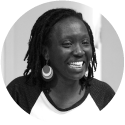
Patrícia Santos | Brazil |
Editor at Peripheries Journal and Executive Director at UNIperipheries
patricia@imja.org.brMacaé Maria Evaristo dos Santos | Brazil |
Professor and Social Worker, tireless defender of education and social well-being. Evaristo holds a degree in Social Service from the Pontifical Catholic University of Minas Gerais (PUC-MG, 1990), and a Masters Degree in Education from the School of Education at the Federal University of Minas Gerais (UFMG, 2006). She has taught in the Belo Horizonte city school network since 1984, working in the area of public education coordination and direction. She has acted as a Coordinating Manager for Educational Policy, Adjunct Secretary, and Municipal Secretary of Education in the period from 2004 to 2012. She taught at the Course for Intercultural Indigenous Teaching and coordinated the Program for the Implantation of Indigenous Schools in Minas Gerais from 1997 to 2003. She worked as Secretary of Literacy, Diversity, and Inclusion at the Ministry of Education (2013 - 2014), was State Secretary for Education in Minas Gerais from 2015 to 2018, and has worked primarily in the areas of educational policy, social movements, inclusion, and cultural plurality.
